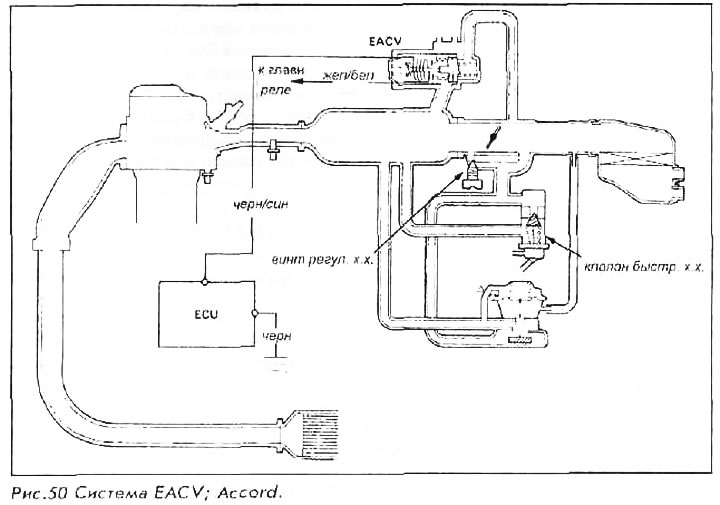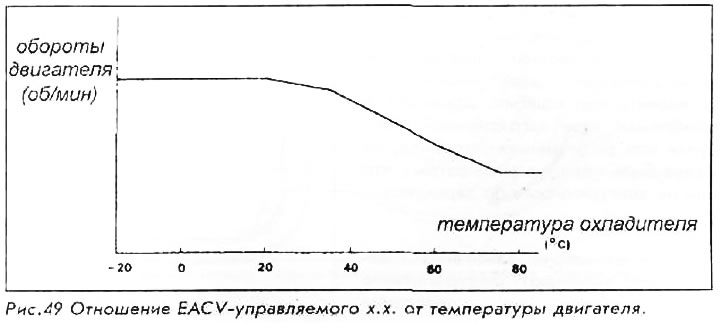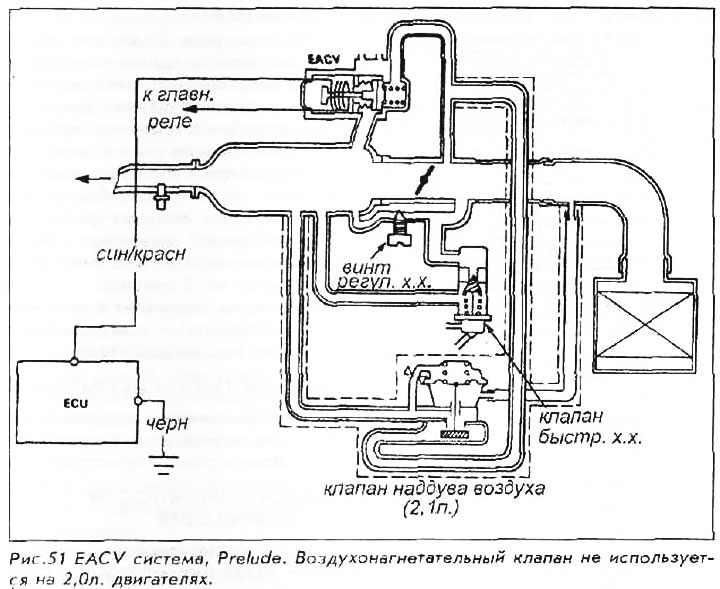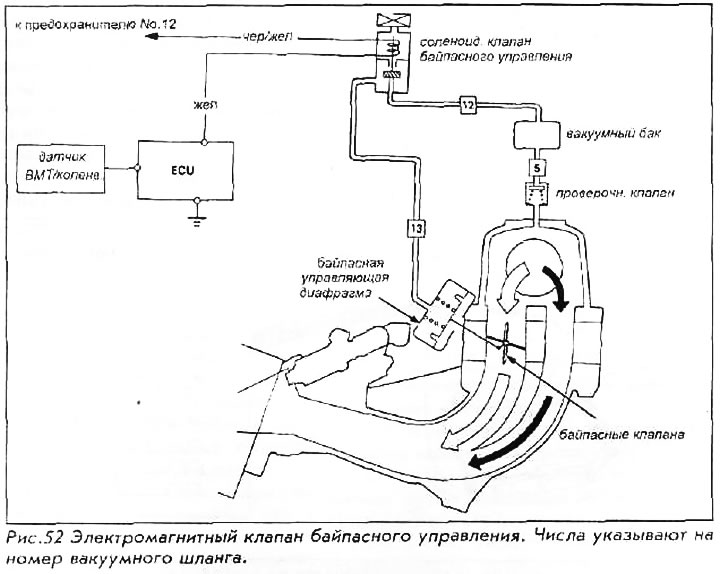Fuel injectors (injectors)
All models use 4 fuel injectors built into the intake manifold and controlled individually by the ECU.
The ECU controls the system by turning on the solenoids inside each injector according to engine speed, intake manifold pressure and other variables. The ECU can recognize injectors that are not functioning electrically and set an error code. Physical problems such as a dirty injector or contaminated fuel cannot be detected because they are not electrical in nature.
Main Relay
Although the main relay turns on the power supply in the car from the ignition key, the ECU controls the switching to ground of the nodes. When the ECU receives information that the ignition key is in the ON position (INCLUDED) and either a crankshaft signal or an engine speed signal is present, the ECU closes the fuel pump power relay.
Signal lamp "CHECK ENGINE" ("CHECK ENGINE")
The warning light on the instrument panel will be illuminated by the ECU within 2 control seconds after the key is turned to the ON position. After this test time has elapsed, the ECU will turn on the lamp any time it detects an electrical circuit failure in the system.
The warning lamp on the instrument panel will be on while the key is in the ON position. Once the ignition is turned off, then back on, the warning light will not illuminate as long as the original or some other damage is present. Although the lamp does not re-ignite, the original error code will remain in memory when the ignition key is turned to "OFF". For this reason, diagnosis should be based on the presence of fault codes and not on a warning light being lit.
Electronic Air Control Valve (EACV)
EACV controls the amount of air that bypasses the throttle in response to signals from the ECU. When the engine is cold, the A/C is on, the automatic transmission is at speed, or the alternator is charging, the EACV is activated to properly control the idle speed.
All vehicles use a fast idle valve controlled by a temperature sensitive valve. On a cold engine, a large amount of air allowed into the engine increases the idle speed. Accord 2.2L engines. include an additional air boost valve to provide a large amount of air supply during engine start. Note that in all cases, the external idle adjustment screw acts on the air bleed port and not on the throttle mechanism.



Air Conditioning Compressor Clutch Relay
When the engine control unit receives an air conditioning request or from an air conditioning switch (Accord) or compressor control unit (Prelude), the signal to the compressor clutch relay is delayed until the ECU can richen the air/fuel mixture. This allows the compressor to be turned on with the least effect on the vehicle's overall handling characteristics.
Purge Shutoff Solenoid Valve
When the coolant temperature is below a predetermined level, the ECU energizes the purge stop solenoid which reduces the vacuum to the purge control valve. The coolant temperature limit or vacuum reduction activation point is different for each engine.
Ignition advance block
The igniter, although part of the ignition system, is triggered by a signal from the ECU. Timing of the ignition spark, including advance, is done by the ECU.
Exhaust Gas Recirculation Control Solenoid Valve (EGR CSV)
When the EGR function is required to provide NOx control, the ECU closes the control solenoid valve to ground. The valve allows you to adjust the vacuum supplied to the EGR, thus precisely controlling the operation of the EGR.
Air intake control solenoid valve
The Accord uses an intake control system to reduce intake noise present. When the engine speed is below 3500 rpm, the ECU turns on the intake control solenoid valve. An open valve directs manifold vacuum to the intake control diaphragm. As a result, the intake air will pass through the resonator chamber, smoothing and calming the airflow.
Generator control
On Accord engines, the ECU controls the voltage generated by the alternator. Controlling the alternator output according to the current draw and driving condition of the vehicle results in a reduced load on the engine, resulting in fuel savings.
Bypass solenoid valve (BPCSV)
Used on 2.0L Prelude engines only, this system provides 2 air passages inside the manifold.
BPCSV is controlled by the ECU; when the engine speed is below 5000 rpm, the valve is activated and the intake air flows through the long passage, at more than 5000 rpm, the valve is deactivated and the shorter passage is open.

Shutoff Control Solenoid Valve
The shut-off control solenoid valve is located on the gearbox. On the Accord and Prelude, the valve is controlled by a separate transmission control unit. The ECU uses the input signals from the speed sensor and the throttle angle sensor to determine the exact timing of the valve activation. Shut-off control solenoid valve only receives ON signals (turn on) or OFF (switch off) from ECU; intermediate positions are not allowed.
